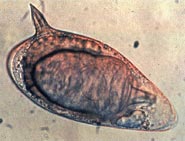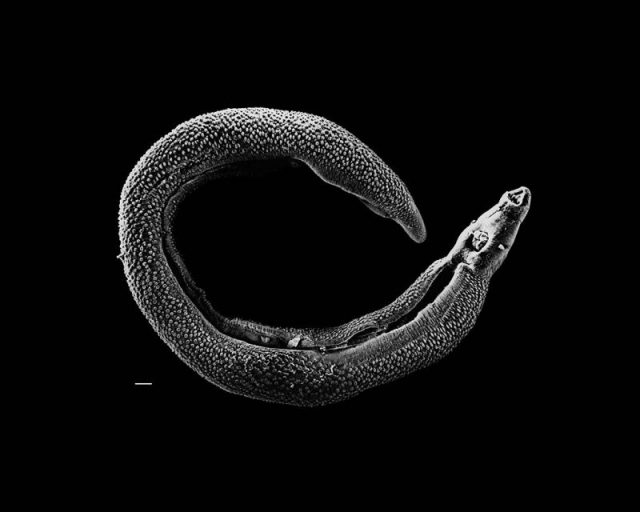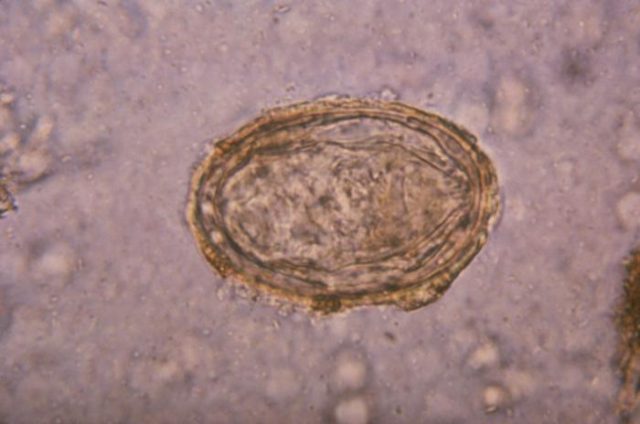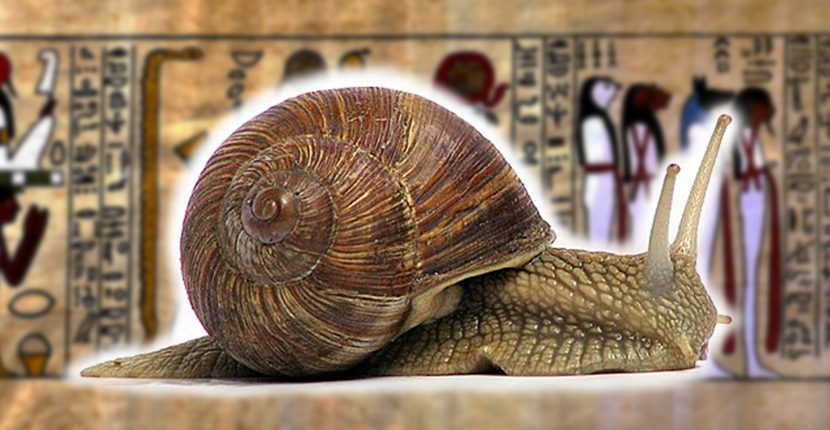Snail fever is not the most flattering name for an infection and seeing red in urine is a disturbing sight for anyone. However, while an underlying medical condition is a possible reason, there’s another option that might not make good reading for any potential patients.
Schistosomiasis is a nasty disease that can be contracted via infected water. Symptoms include such delights as pain in the abdomen, fever, and diarrhea. It was discovered by German physician Theodor Bilharz and is also known as Bilharzia. Another name for it is “snail fever,” which gives an idea of the distasteful reality behind the condition.

The infection comes from a type of microscopic trematode worm called Schistosoma, which has a complex life cycle. Just as the malaria parasite spends part of its life inside a mosquito, Schistosoma need a secondary host, in this case water snails, inside which their babies grow into teenagers. Now we get to the really gruesome part.

These teens burst out of the snail-host and swim around in fresh water lakes, rivers, ponds or streams, looking for a new home. A juicy human is exactly where they want to be; once they find one, they will burrow right through the person’s skin and into a blood vessel. But wait, it gets even more revolting. The next part can cause damage to various vital organs.
Once in the system, the Schistosoma migrate through their victim’s bloodstream to the liver, where they grow into adults and mate, before wiggling off to the intestines or bladder (depending on the species) to lay their eggs. The eggs leave the body by way of urine or feces, then hatch into larvae which start hunting for a water snail. And the terrible cycle begins again.

The spread of schistosomiasis has been a cause of concern since its discovery in the mid-1800s. According to the World Health Organization website, “It is estimated that at least 91.4 percent of those requiring treatment for schistosomiasis live in Africa.”
The disease is found in the tropics and subtropics. Bilharz uncovered the parasites in Egypt. Communities that regularly use unsanitary water are most at risk, so cruelly the poorest are hit hardest. The lack of information about health can also lead to an awful misunderstanding about the onset of the disease.
Related Video: Disturbing Instances Where Ancient Egyptian Curses Seemed To Come True
Even as recently as the 20th century the presence of “haematuria,” or bloody urine, was seen by some in Egypt as a natural bodily process. It’s a common sign that schistosomiasis has taken hold, but to the uneducated, it looked like something else. They believed it was a male form of menstruation.
In 2000, WHO estimated a global death rate of 200,000. The disease has been identified in 78 countries, so the impact on humanity has been extensive. Thankfully there are ways of tackling the horrifying infection, employing a combination of medicine, such as praziquantel, and good old Mother Nature.

In 2017, the BBC covered a development in the battle against schistosomiasis that saw water-dwelling creatures take the fight to the source. Snails weren’t doing the world any favors when it came to spreading the disease, but it turned out prawns did things differently.
Scientists observed that the building of dams had blocked prawns from accessing the ecosystem. Because prawns love to tuck into a juicy water snail, they reasoned if the prawns were restored to the water source, then the chances of infection would be reduced.

The BBC report quotes Dr. Susan Sokolow of Stanford University: “Where there were dams, schistosomiasis increased, but it increased more–at least double on average where we expected these predators to be, traditionally–compared to those dammed watersheds where they have not been.”
This is good news for Egypt and many other areas. In their paper for the journal Human Ecology Review in 2002 called “The Paleoepidemiology of Schistosomiasis,” Helmut Kloos and Rosalie David outline what they think is mankind’s contribution to the sorry situation:

“The development of irrigation in Egypt provided conditions favorable for schistosomiasis, especially Schistosoma haematobium infection, and infection rates apparently increased until recent years.”
Related Article: Egyptians used an Amazingly Accurate Pregnancy Test
People prefer their parasites to be both out of sight and as far away as possible. The parasites (or “blood flukes” as they are charmingly referred to) have one side of that view covered. Now, thanks to the humble prawn, they may just be facing extinction.
Steve Palace is a writer, journalist, and comedian from the UK. Sites he contributes to include The Vintage News, Art Knews Magazine and The Hollywood News. His short fiction has been published as part of the Iris Wildthyme range from Obverse Books.
